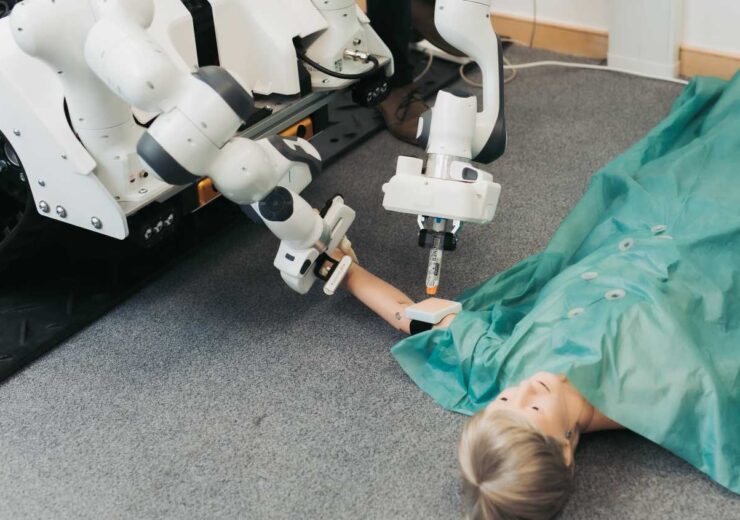Scientists from the University’s Advanced Manufacturing Research Centre (AMRC), Department of Automatic Control and Systems Engineering, and Sheffield Robotics have developed a robotic-controlled uncrewed ground vehicle (UGV), within nine months

The UGV will triage casualties in unsafe environments. (Credit: The University of Sheffield)
Researchers at the University of Sheffield have developed advanced robotics technology that can provide remote medical treatment to casualties in high-risk emergency environments.
Scientists from the University’s Advanced Manufacturing Research Centre (AMRC), Department of Automatic Control and Systems Engineering, and Sheffield Robotics participated and completed the project within nine months.
The project was led by AMRC digital design head David King, and Sheffield Robotics Director and Department of automatic control and systems engineering professor Sanja Dogramadzi.
The researchers used medical tele-existence (MediTel) technology to develop a mobile, robotic-controlled uncrewed ground vehicle (UGV) with virtual reality (VR) capability.
It enables medics and operators to evaluate critical casualties in potentially unsafe or hazardous environments and help perform a remote triage safely.
David King said: “Our MediTel project has demonstrated game-changing medical telexistence technology that has the potential to save lives and provide remote assessment and treatment of casualties in high-risk environments such as humanitarian disasters.
“Developing and field testing a state-of-the-art, complex system such as MediTel in just nine months has been an incredible achievement and a testament to the skills and capabilities of the entire project team.
“MediTel combined existing medical devices with state-of-the-art robotics systems to develop a platform capable of allowing a remote operator to navigate through potentially difficult terrain and provide critical diagnoses of high-risk casualties.”
The UGV features two robotic arms that can remotely operate medical tools to perform a critical initial assessment of a casualty within 20 minutes and provides real-time data to the operator.
The initial assessment includes measuring temperature, blood pressure and heart rate, carrying out palpation of the abdomen and administering pain relief through an auto-injector.
In the lab and field testing, UGV could evaluate and triage a casualty successfully.
AMRC used its ability to design and create a prototype of the UGV and integrated the overall MediTel system.
The Department of Automatic Control and Systems Engineering advanced the development of robotics controls.
Defence and Security Accelerator (DASA) funded the MediTel technology through a two-phase £2.3m innovation competition, on behalf of the Defence Science and Technology Laboratory (Dstl) and the Nuclear Decommissioning Authority (NDA).
Dogramadzi said: “This project has allowed us the opportunity to develop a platform that could be used by multiple emergency response services.
“It now serves us with the basis for our research to be extended and look into enabling resilient autonomy and integrating other sensing modalities to assist patient triage in other remote settings.”
